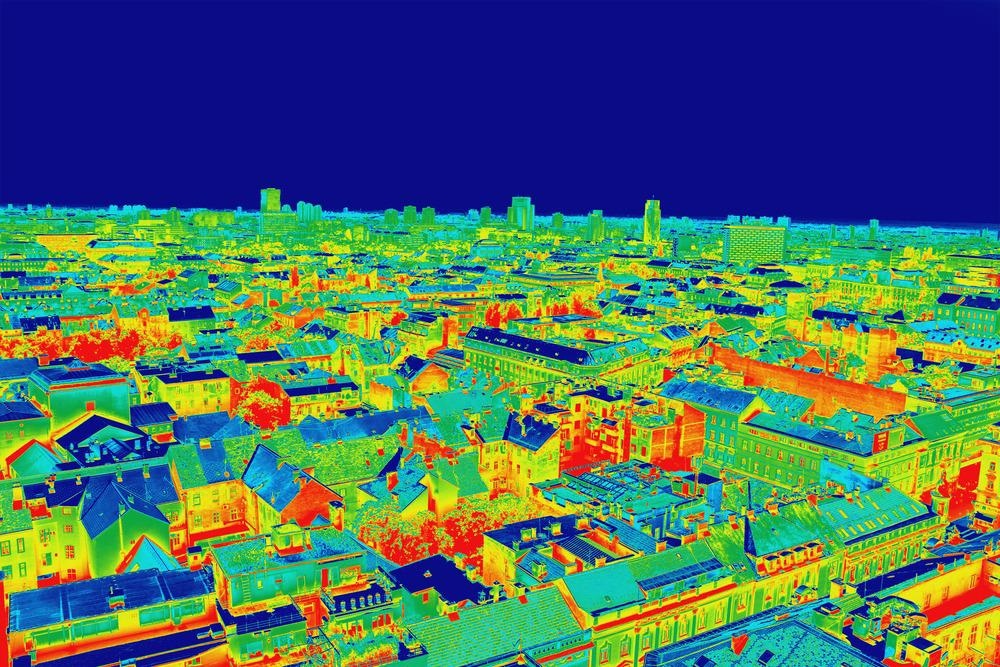With the ever-increasing need for improved infrared-based camouflage devices, research turns to graphene oxide for more efficient camouflage capabilities. Published in the journal Composites Part B: Engineering, a new study presents a novel approach to utilizing graphene oxide sheets, particularly for infrared-based camouflage applications.

Study: Conductive, Strong and Tough Reduced Graphene Oxide-based composite film for infrared camouflage application. Image Credit: Ivan Smuk/Shutterstock.com
The Strength of Natural Nacres
Organic nacre is widely renowned for its exceptional strength and hardness, as it outperforms many artificial composites.
Its various mechanical qualities are due to a closely packed brick-and-mortar configuration of two substances with different mechanical characteristics. These substances are inorganic minerals with high tensile strength but poor ductile properties and organic molecules with high tensile properties but relatively low strength.
Nacre is composed of 95% stacked aragonite platelets that are connected by just 5% biopolymer thin sheets and carefully constructed into a nanoscale structure.
The Unique Structure of Nacre
The distinct structure of the nacre significantly enhances its fracture resistance. This resistance is roughly 3000 times greater than plain calcium carbonate particles. As a result, numerous attempts, including the use of nanoparticle-based clay platelets, double-walled carbon nanotubes, and silane-modified aluminum oxide platelets, among others, have taken place to replicate this layout and develop nacre-like layered composites
Synthesis of Graphene Oxide Sheets
Graphene oxide is an oxygenated, hydrophilic form of graphene with functional groups of oxygen on its sheet edges and basal planes.
Numerous attempts have been made to create methods to prepare graphene oxide sheets and further enhance their mechanical characteristics by customizing the interactions through improved synthesis, introducing various bonding techniques, or increasing the extent of compaction.
Graphene and Nacres – The Perfect Marriage
The mechanical characteristics of graphene oxide sheets have been greatly enhanced by using a nacre-based graphene oxide polymer layered structure. Nevertheless, when the fundamental mechanical characteristics of graphene oxide sheets are considered, the findings observed deviate significantly from the theoretical expectations.
The primary reason for this deviation is the weak interfacial bonds between graphene sheets.
With ongoing research into graphene-based sheets, composite sheets with superior mechanical characteristics alone cannot meet the requirements associated with "structure-function integration," therefore, the selection of advancement materials must also consider the requirements for functional performance applications.
Graphene or graphene-based derivative sheets feature densely packed gaps in the longitudinal axis and a hexagonal plane made of carbon compounds. This nanostructure offers distinct benefits for the operational use of graphene sheets.
Dynamic Infrared Camouflage Devices
Dynamic infrared-based camouflage devices have received interest because of their extensive application prospects in both civil and military domains.
To date, many different types of dynamic infrared-based camouflage systems have been produced. One such type incorporates graphene oxide into the architecture to offer improved characteristics.
Enhancement through graphene enables the infrared-based devices to have high tunability, highly stable performance, and relatively quick response time, providing an alternate prospect for infrared-based camouflage systems.
Unfortunately, most graphene sheets used today are single-layered or multilayer sheets generated via chemical vapor decomposition, which is expensive, time-consuming, and an overall complex process.
As a result, developing a simple yet efficient preparation technique for graphene composite sheets for infrared-based camouflage application is critical
Basis of Current Research
In this study, polyurethane was chosen for linking with graphene oxide nanosheets due to its high compatibility. The inclusion of carbon nanotubes further enhanced conductivity.
A composite sheet comprising graphene oxide with dynamic infrared-based camouflage capability was created using the combined action of polyurethane and carbon nanotubes, accomplishing the synchronous enhancement of both structure and function.
Important Results of the Study
In this study, the team structurally designed a "brick-reinforced concrete" framework using graphene oxide, polyurethane, and carbon nanotubes. The team noted that the addition of polyurethane caused graphene-based nanosheets to transition from intermolecular force contact to covalent bond coupling, considerably improving the sheet's tensile strength and fracture resistance.
Additionally, the inclusion of carbon nanotubes enhanced the conductivity associated with the composite sheet without substantially affecting its mechanical characteristics, indicating a promising future for the composite sheet concerning its functional utilization.
Further Reading
Jianwei Zhang, G. L. (2022). Conductive, Strong, and Tough Reduced Graphene Oxide-based composite film for infrared camouflage application. Composites Part B. Available at: https://doi.org/10.1016/j.compositesb.2022.109998.
Disclaimer: The views expressed here are those of the author expressed in their private capacity and do not necessarily represent the views of AZoM.com Limited T/A AZoNetwork the owner and operator of this website. This disclaimer forms part of the Terms and conditions of use of this website.